Few automobiles elicit the kind of reverence that the Mercedes-Benz 280 SL does—its very name evokes elegance, precision, and the golden age of European grand touring. Introduced in 1968 and produced through 1971, the 280 SL was the final evolution of the W113 chassis, better known among aficionados by its affectionate nickname: the “Pagoda.”
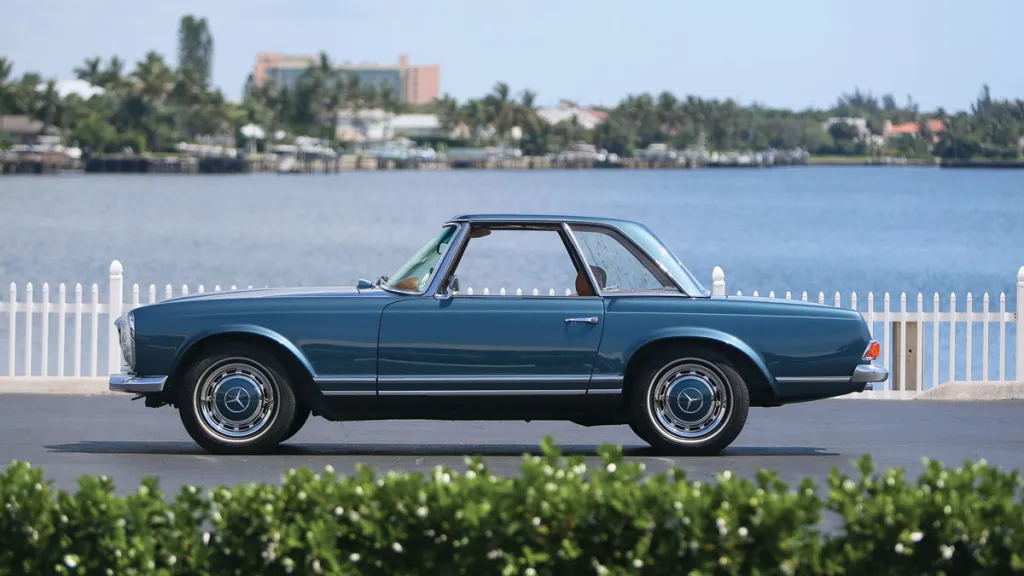
At the time of its release, it was a misunderstood beauty. Compared against flashier contemporaries like the Jaguar E-Type or Porsche 911T, the 280 SL drew muted praise in performance-focused reviews. But history has rewritten that verdict. In an era where horsepower figures fade behind digital dashboards and zero-to-60 times are practically irrelevant, the 280 SL’s value lies in its design purity, tactile engineering, and timeless composure.
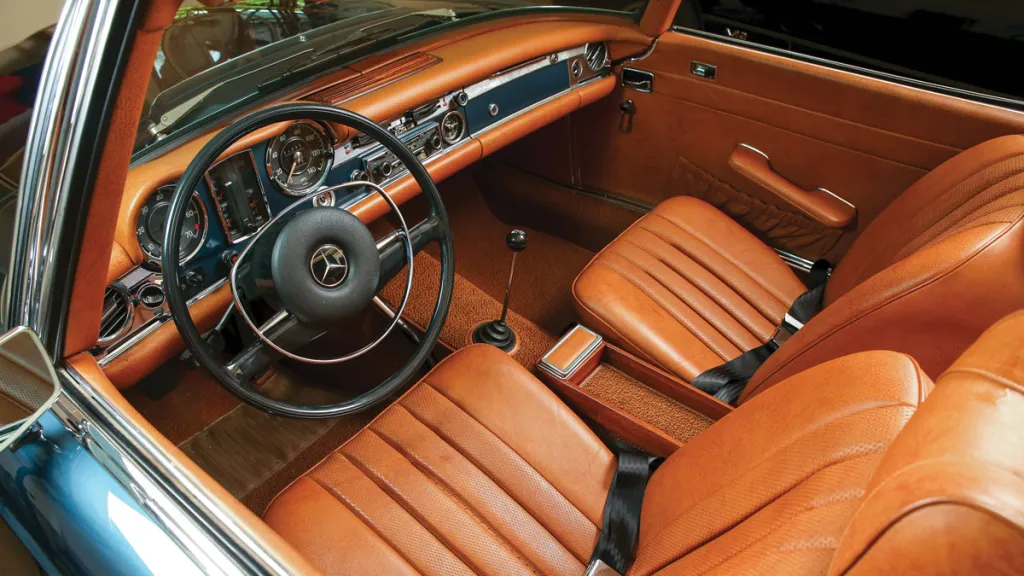
One of the most charming rituals of ownership is simply closing its door—a solid, reassuring click that speaks volumes of Mercedes-Benz’s old-world craftsmanship. This car wasn’t designed to dazzle on paper; it was built to last, to impress in person, and to glide through decades with poise. Its removable hardtop, whose distinctive concave shape inspired the Pagoda nickname, transforms the car from a stately coupe into an open-air icon in moments.
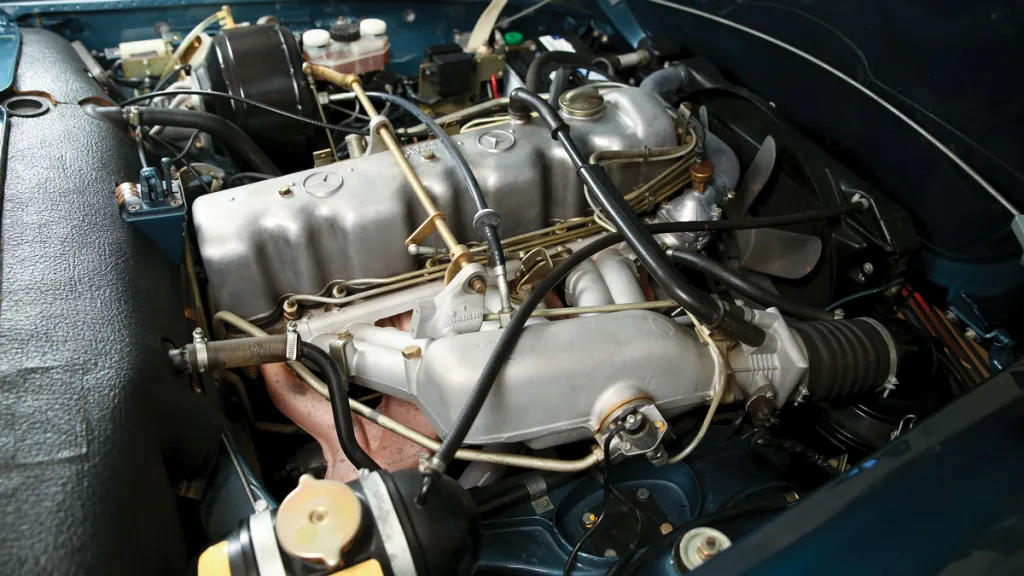
Though the W113 series began with the 230 SL and matured with the 250 SL, it’s the 280 SL that has captured the most enduring adoration. Its 2.8-liter inline-six engine, equipped with mechanical fuel injection, was a technological leap for its time, producing a smooth 177 horsepower. Most U.S. buyers opted for the four-speed automatic, but manual variants—including an ultra-rare five-speed—are highly coveted today.

Design-wise, the 280 SL marked a shift from the curvaceous sensuality of its predecessors. Its crisp, geometric lines embodied a modernist restraint that resonates with collectors now more than ever. The car’s palette—refined shades like Tobacco Brown, Light Ivory, and deep Olive, paired with Cognac or Parchment leather interiors—enhanced its role as a symbol of quiet luxury.
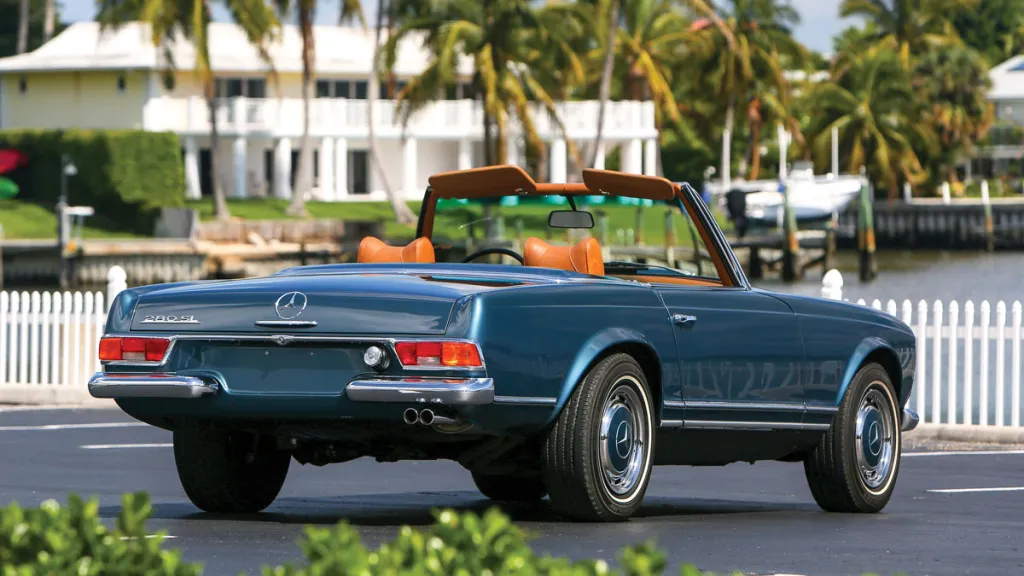
Restoring a 280 SL to concours-level perfection is not for the faint-hearted—or the light-walleted. These cars, while seemingly straightforward, are unforgiving in the details. A full restoration can reach into six-figure territory. Savvy buyers are increasingly turning to well-restored examples, where prices for a quality driver begin around $70,000, with top-tier, museum-quality versions regularly exceeding $225,000. Original options, such as factory air conditioning or manual transmission, can add 25% or more to the market value.
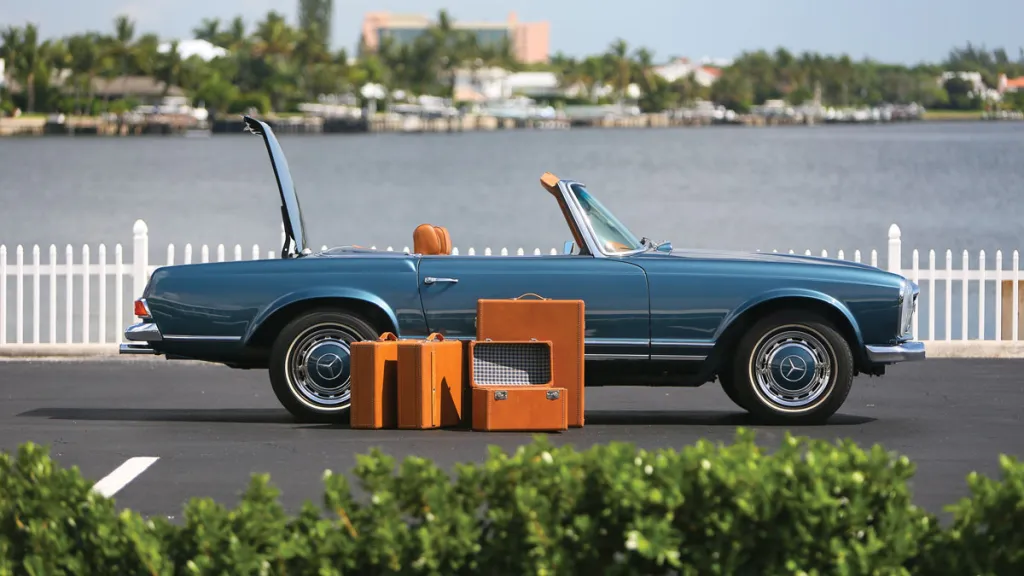
In a world awash with ephemeral trends, the Mercedes-Benz 280 SL remains a symbol of enduring design and cultivated taste. It’s not merely a car—it’s an heirloom, a piece of rolling architecture that continues to outclass fleeting obsessions with effortless grace. For serious collectors and lovers of luxury, the Pagoda isn’t just relevant—it’s essential.


